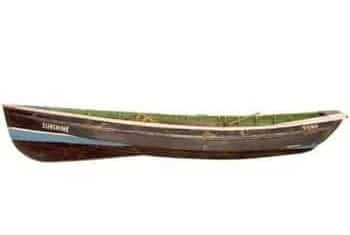
Sunshine was built c.1880 as a ‘foy boat’ for the River Wear in the North East of England. It was used for a range of inshore duties, such as transporting people and goods, and carrying out mooring work for larger vessels while in harbour.
Sunshine is a small coble known as a ‘half-coble’. It has a more heavily sloping stern and lower bow than the larger boats used for fishing. Boats like these are found all along the North East coast of England from Spurn Head in Yorkshire to Seahouses in Northumberland.
Like many working boats based around Britain’s coastline, the distinctive hull shape of these boats has evolved and developed to become perfectly suitable for the sea conditions and the work for which they are used.
The Coble and Keelboat Society has a huge archive of information about these remarkably shaped vessels and their crews.
Dimensions:
Length 5.8m
Beam 1.6m
Depth 0.8m


